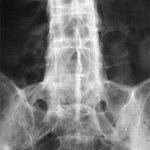As our thinking of self/nonself proved in retrospect to be simplistic, and the gap between infection and trauma begins to narrow, potential new scenarios arise in the pathogenesis of inflammatory joint disease. Could exacerbation of AS after trauma reflect such processes? Could chronic inflammatory events in the skin, with local tissue injury, set the stage for psoriatic arthritis? Could the mucosal injury of Salmonella gastroenteritis or Chlamydia urethritis invoke these pathways? Could all arthritis be reactive? These are fascinating questions. As the landscape is changing, we should stay tuned.
Dr. Inman is senior scientist in the Division of Genetics and Development at Toronto Western Research Institute and professor of medicine and immunology at the University of Toronto in Ontario, Canada.
References
- Zabriskie JB, Hsu KC, Seegal BC. Heart-reactive antibody associated with rheumatic fever: Characterization and diagnostic significance. Clin Exp Immunol. 1970; 7:147-159.
- van de Rijn I, Zabriskie JB, McCarty M. Group A streptococcal antigens cross-reactive with myocardium. Purification of heart-reactive antibody and isolation and characterization of the streptococcal antigen. J Exp Med. 1977;146:579-599.
- Khanna AK, Nomura Y, Fischetti VA, Zabriskie JB. Antibodies in the sera of acute rheumatic fever patients bind to human cardiac tropomyosin. J Autoimmun. 1997;10:99-106.
- Albert LJ, Inman RD. Molecular mimicry and autoimmunity. New Eng J Med. 1999;341:2068-2074.
- Lundberg K, Kinloch A, Fisher BA, et al. Antibodies to citrullinated alpha-enolase peptide 1 are specific for rheumatoid arthritis and cross-react with bacterial enolase. Arthritis Rheum. 2008;58:3009-3019.
- Schwimmbeck PL, Yu DT, Oldstone MB. Autoantibodies to HLA B27 in the sera of HLA B27 patients with ankylosing spondylitis and Reiter’s syndrome. Molecular mimicry with Klebsiella pneumoniae as potential mechanism of autoimmune disease. J Exp Med. 1987;166:173-181.
- Hermann E, Yu DT, Meyer zum Büschenfelde KH, Fleischer B. HLA-B27-restricted CD8 T cells derived from synovial fluids of patients with reactive arthritis and ankylosing spondylitis. Lancet. 1993;342:646-650.
- Popov I, Dela Cruz CS, Barber BH, Chiu B, Inman RD. Autoreactive anti-B27 CTL induced by in vitro stimulation with Chlamydia. J Immunol. 2002;169:4033-4038.
- Granfors K, Jalkanen S, von Essen R, et al. Yersinia antigens in synovial-fluid cells from patients with reactive arthritis. N Engl J Med. 1989;320:216-221
- Zhang X, Pacheco-Tena C, Inman RD. Microbe hunting in the joints. Arthritis Rheum. 2003;49:479-482.
- Tsui FWL, Xi N, Rohekar S, et al. TLR-2 variants are associated with acute reactive arthritis. Arthritis Rheum. 2008;58:3436-3438.
- Hammer RE, Maika SD, Richardson JA, Tang JP, Taurog JD. Spontaneous inflammatory disease in transgenic rats expressing HLA-B27 and human beta 2m: An animal model of HLA-B27-associated human disorders. Cell. 1990;63:1099-1112.
- Taurog JD, Richardson JA, Croft JT, et al. The germfree state prevents development of gut and joint inflammatory disease in HLA-B27 transgenic rats. J Exp Med. 1994;180:2359-2364.
- Abdollahi-Roodsaz S, Joosten LA, Koenders MI, et al. Stimulation of TLR2 and TLR4 differentially skews the balance of T cells in a mouse model of arthritis. J Clin Invest. 2008;118:205-216
- Rahman P, Inman RD, Gladman D, Reeve J, Peddle L, Maksymowych W. Association of IL-23R variants and ankylosing spondylitis. Arthritis Rheum. 2008;58:1020-1025.
- Ciccia F, Bombardieri M, Principato A, et al. Overexpression of interleukin-23, but not interleukin-17, as an immunologic signature of subclinical intestinal inflammation in ankylosing spondylitis. Arthritis Rheum. 2009;60:955-965.
- Bas S, Kvien TK, Buchs N, Fulpius T, Gabay C. Lower level of synovial fluid interferon-gamma in HLA-B27-positive than in HLA-B27-negative patients with Chlamydia trachomatis reactive arthritis. Rheumatology (Oxford). 2003;42:461-467.
- Inman RD, Chiu B. Cytokine profiles in the joint define pathogen clearance and severity in Chlamydia-induced arthritis. Arthritis Rheum. 2006;54:499-507.
- Inman RD, Chiu B. Heavy metal exposure reverses genetic resistance to Chlamydia-induced arthritis. Arthritis Res Ther. 2009;11:19.
- Smith AM, Rahman FZ, Hayee B, et al. Disordered macrophage cytokine secretion underlies impaired acute inflammation and bacterial clearance in Crohn’s disease. J Exp Med. 2009;206:1883-1897.
- Carter JD, Espinoza LR, Inman RD, et al. Combination antibiotics as a treatment for chronic Chlamydia-induced reactive arthritis. Arthritis Rheum. 2010;62:1298-1307.
- Gray MW, Burger G, Lang BF. The origin and early evolution of mitochondria. Genome Biol. 2001;2:1018.
- Zhang Q, Raoof M, Chen Y, Sumi et al. Circulating mitochondrial DAMPs cause inflammatory responses to injury. Nature. 2010;464:104-1047.


